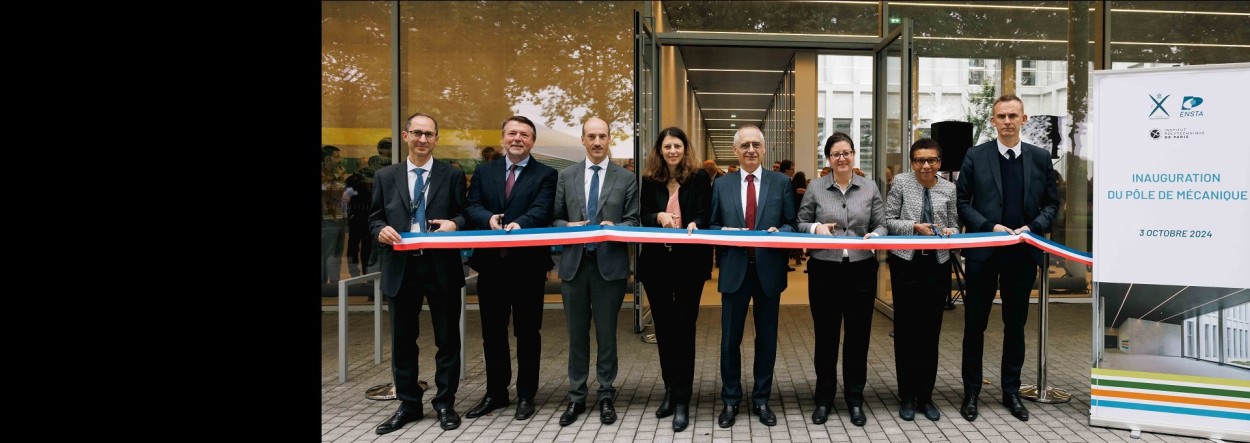Inauguration of the Mechanical Hub designed and built with ENSTA Paris

The inauguration of the Mechanical Hub building is the end-point of a major project to bring the mechanical engineering laboratories of École polytechnique and ENSTA Paris closer together, both geographically and scientifically.
It also marks the creation of the Department of Mechanics and Energy at the Institut Polytechnique de Paris, of which École Polytechnique and ENSTA Paris are founding members.
Located in the heart of the École polytechnique district, this new facility aims to create an attractive, and visible research hub, both on and off campus. As a meeting and exchange point, it aims to become an international showcase for the excellence of mechanical engineering research in France.
The 10,000 m2 building houses the Laboratory of Hydrodynamics -LadHyX (CNRS/École polytechnique), the Laboratory of Solid Mechanics -LMS (CNRS/École polytechnique), the Mechanics Unit (UME) and the Laboratory of Mechanics and Interfaces (LMI) from ENSTA Paris, the Institute of Mechanics and Industrial Applications (IMSIA), in partnership with CEA, CNRS, EDF, and ENSTA Parisas well as the experimental teaching facilities of the two Schools.
To promote synergies and pool the strengths of the two Schools as much as possible, Mechanical Hub building brings together cutting-edge experimental and measurement equipment, work and prototyping spaces adapted to needs and demands, and their technical teams.
This project is part of a global dynamic with the construction by ONERA, the French aerospace research center, also based in Palaiseau, of a new research site close to this new building.
The Mechanical Hub building was built by Pascale Guédot Architecte, Batiserf Ingénierie, Louis Choulet, CL-INFRA, Bureau Michel Forgue, Peutz & Associés, Casso & Associés and Transsolar SAS.
Scheduled for completion in the first half of 2024, after three years of construction work, the Mechanical Hub building has been financed by École Polytechnique to the tune of 30 million euros, and by ENSTA Paris to the tune of 7.5 million euros. EPA Paris Saclay was involved in managing the project.